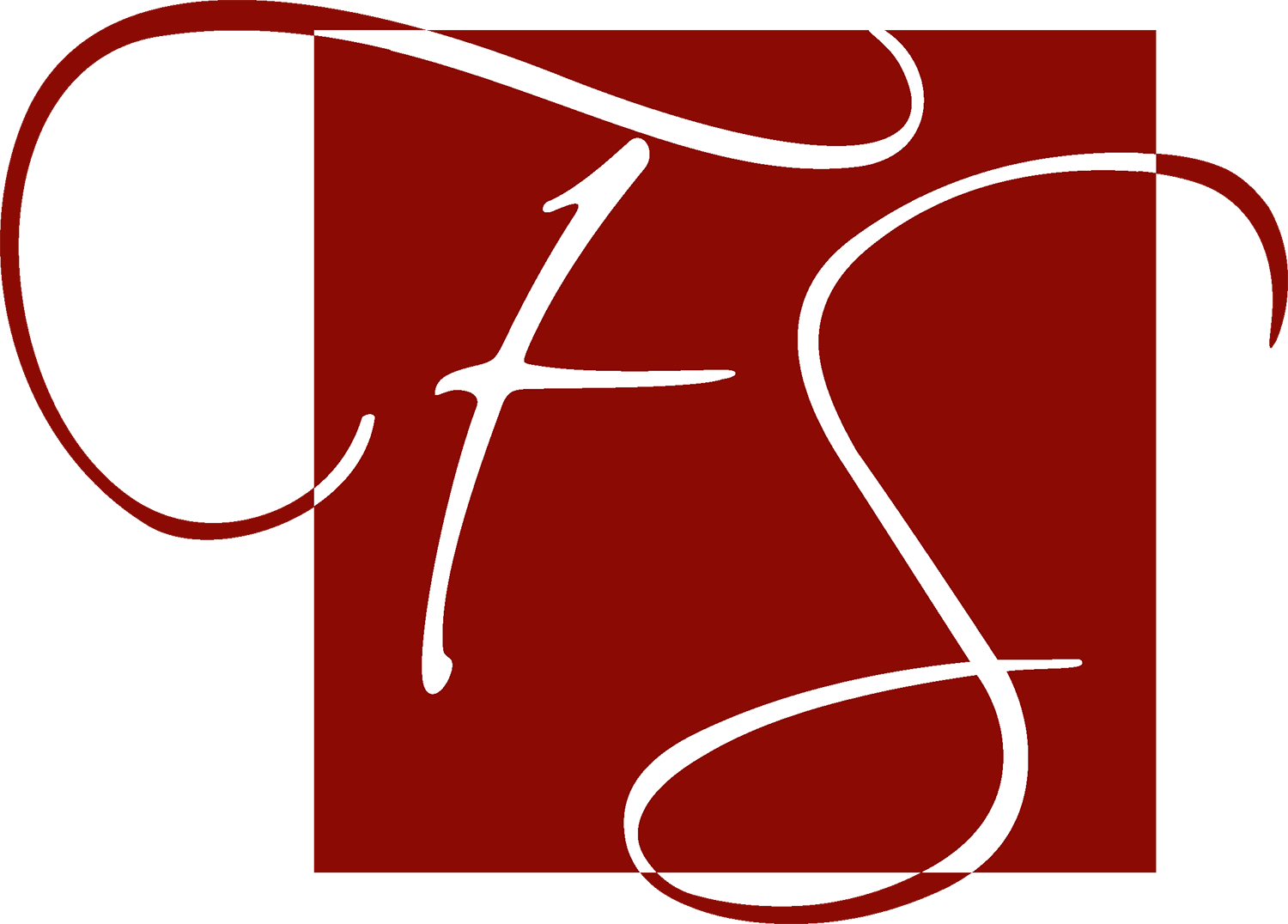by Lisa Sciortino
Shelley Holley thinks it is “so cool” that the Frisco Public Library has relocated to a massive, nearly 159,000-square-foot space that formerly housed a rocket factory.
“Think about it: What do rockets do? They store the fuel to explore the stars. What does a library do? It stores the fuel to explore the imagination. I feel like there’s a parallel there and they’re both future-looking,” she says.
About a half-century into the future, to be exact. Shelley, longtime library director for the City of Frisco, says the facility’s well-appointed new home, at 8000 Dallas Parkway, was thoughtfully and purposefully designed with the intent of serving our dynamic, growing community for at least the next five decades.
Following some delays that pushed back the timeline by about a month, the Frisco Public Library is scheduled to open early this month (an exact date was not available prior to the publication of this magazine).
“It was critical that this building be very flexible because the mandate was (to) build a library (to last) for 50 years … and so flexibility was everything. … I can’t predict how libraries will change” in coming decades, “but I believe this space will be able to adapt to it,” she says.
For example, all of the bookshelves are on casters so that they may be moved to make room for library programming, additional seating or more shelves if needed. The building also boasts a raised floor to accommodate the addition of power and data lines “anywhere we decide we want to have it, so that frees up how you can work within the space,” Holley explains.
Even the library service desks, which “fit together like puzzle pieces in different ways,” are mobile, she explains, “so, if we discover where we have put them isn’t really where the public seems to want them, we can move them.”
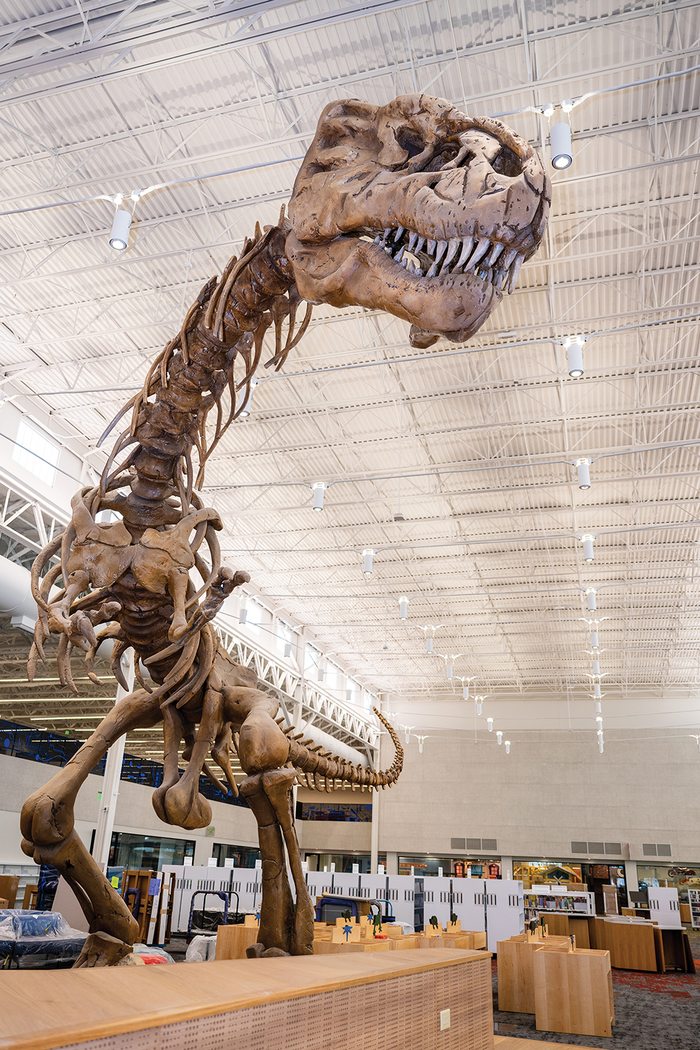
Planning for Patrons
Last December, the library moved out of its former 45,000-square-foot space at the George A. Purefoy Municipal Center, where it had been located since 2006. Holley says the library began outgrowing that space nearly a decade ago.
“It got to the point where the shelves were completely full. … We couldn’t always lay them out in a logical way because the collection had outgrown the size of the space.” Also, “There were days when I would walk the floors out in the public areas and people would be sitting on the floor because there were no tables and chairs available, especially in the summer.”
In 2014, a master plan for a new library was created, when it was determined (based on resident input) that Frisco’s libraries would not go to a branch system with smaller buildings that provided limited services. The master plan for a new library was approved the following year by the Frisco City Council.
Following a yearlong facilities study that began in 2017, it was determined that repurposing the former Beal Aerospace Technologies building into the new Frisco Public Library facility made the most financial sense for the city. Two years later, voters approved a $62 million bond measure in support of the new library.
Holley says in planning for the new space and the services to be offered there, she and the library staff studied the habits of library users, and also surveyed Frisco residents. “Once we kind of zoomed in on understanding what each of those user groups required, we made sure that we plugged their requirements into the plan.”
The result is a state-of-the-art facility equipped with expansive areas for children and teens, multiple conference rooms and study rooms that can be reserved, an audio and video production room, a large computer lab, a makerspace, a used books shop, a covered terrace, a quiet reading room that boasts floor-to-ceiling glass windows, a large gathering space capable of accommodating 300 people, and a space dubbed Creativity Commons where classes and other programming can take place.
The key to successfully designing the new library was identifying the needs of its users, Holley says.
“Once we understood what percentage of people are going to want conference rooms and study rooms, what percentage of people are going to be able to socially gather or lounge around, what percentage of people are only coming in to grab a book and leave, and what percentage of people are taking their children to programs, all of that informed how we laid it out and what we offered.”
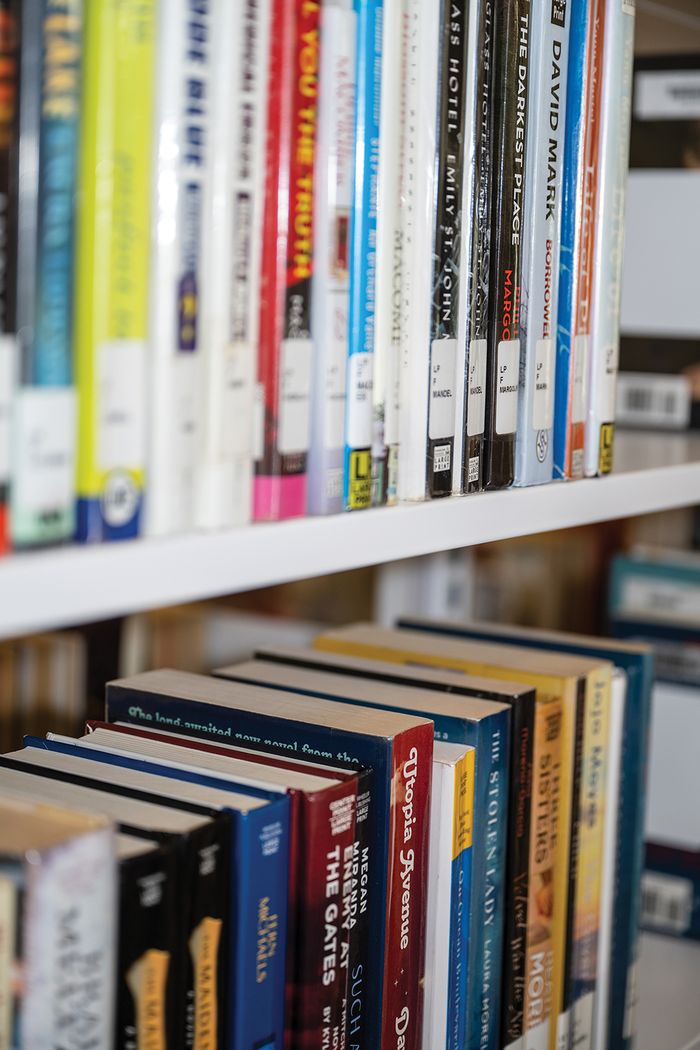
Taking A Look Around
Holley recently gave Frisco STYLE a pre-opening tour of the library, which was abuzz with construction projects nearing completion, and pointed out a good many of its exciting new features.
Visitors are immediately drawn to a massive wooden “social stair” in the middle of the library that pulls double duty as casual seating as well as space where performances and other programming may be staged. On the stairs, “You can see and be seen,” Holley says.
At its foot is the centerpiece of the library: a 22-foot-tall, 42-foot-long custom-built Tyrannosaurus Rex skeleton replica affectionately named Rexy (determined via a public naming contest that was held last year). Its pointy vertebrae and angular ribcage complement the industrial architectural elements of the former rocket factory that remain in the space.
“Did I imagine a dinosaur in the library? .... No, I did not but ... she’s kind of the gateway to (the) children’s” area of the building, Holley says. Also, “There’s a relationship in how the detail on her and the detail that we preserved in the building come together and sing.”
All of the library’s tables will eventually feature electrical outlets (rather than USB ports, which tend to break or malfunction more quickly, Holley says). So library users toting electronic devices will also “have to bring a charging brick and your (power) cord,” she reminds.
A wide variety of seating is available on both levels of the library — from upholstered chairs that swivel to large, cozy covered banquettes that are ideal for small groups working on a project.
Upstairs, the quiet reading room boasts walnut-wood accents and floor-to-ceiling windows through which natural light floods the space. Along with traditional furniture, futuristic-looking seating pods — featuring lighting, access to power and a laptop tabletop — are available.
Nearby is the Vivian Stark McCallum Terrace, a partially covered outdoor space that will feature seating and trees stationed in planters donated by the Friends of the Frisco Public Library organization. (Since this space — along with others at the library — will be available for rent by the public, Holley foresees events such as weddings eventually setting up here.)
Down a hallway is the library ’s tech-heavy makerspace, offering stereolithography (SLA) 3D printing that uses light-reactive thermoset material called resin. Unlike traditional 3D printing, Holley says, SLA “only adds (material that) is required. It also causes you to think and program and design in 3D instead of 2D.”
Adjacent to the makerspace is the computer lab, where eight 3D computers with holographic screens will be housed among numerous others. They are among the more than 200 computers within the building (although not all are for public use).
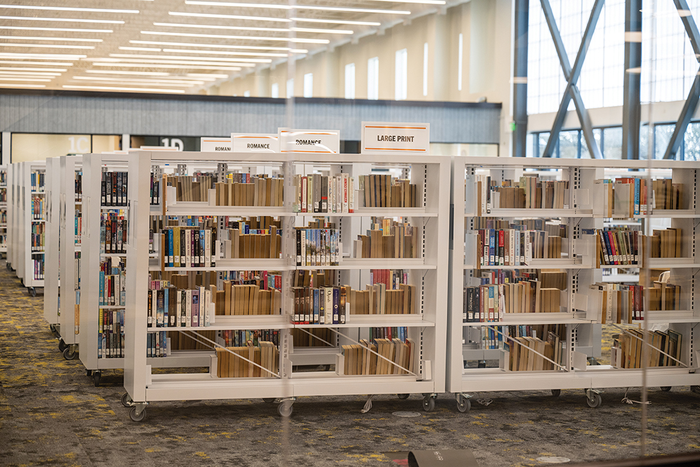
For the Little Ones
Rexy isn’t the only bit of whimsy to have been installed in library’s impressive new space.
A river (of words, that is) flows across the lobby ceiling as artwork titled Storied Landscape, which features over 40 quotes from literature.
Holley says of the piece that was inspired (as is much of the library ’s theming) by Frisco’s native Blackland Prairie landscape: “It’ll be fun for people to read (the words) and figure out if they know the book” from which they originate.
A popular attraction at the library’s previous location was the Ready to Read Railroad, a train-themed area within the children’s library that was a project of the 2016 Leadership Frisco class. An expanded version of the train is parked in the new space, amid Tiny Town where infant- through preschool-age youngsters can experience hands-on learning.
“What we have disguised in here that looks like play are about 22 different activities that assist children with emerging literacy skills and the skills they need to be successful in kindergarten,” Holley says.
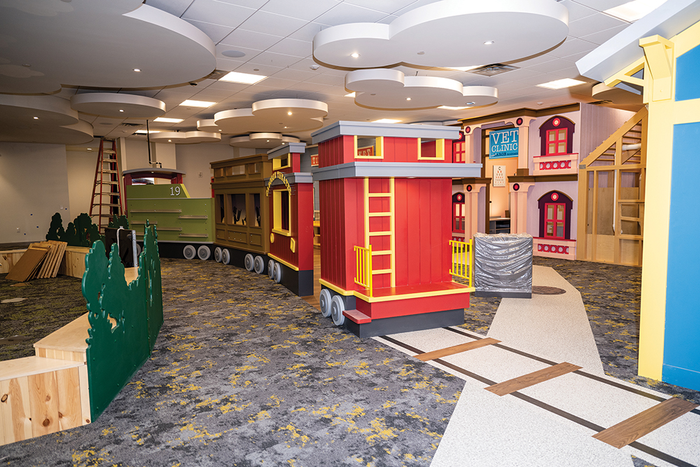
Meanwhile, a large pond-themed area will house board books for infants and toddlers. A dedicated room that features a prairie sky will also serve as the staging area for story time sessions as well as other programming and activities.
For older kids, there are areas devoted to STEM and robotics equipment along with opportunities to understand physics and computer coding.
A tall faux-wood-painted wall on the far end of the library, complete with kid-sized cubbies and niches, is a cleverly disguised sound diffuser, which Holley says helps to deaden sound emanating from the bustling children’s area.
“It’s pointed in all kinds of angles to prevent noise” from being reflected back into the rest of the library, she explains. “This is a big open space and sound management is a big deal.”
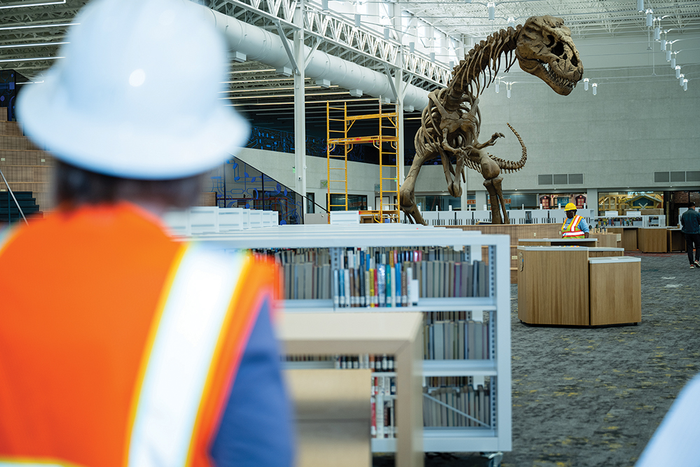
Settling In the Space
Holley says she expects to see a sizeable uptick in the number of library visitors and users in coming months.
“It’s typical when a library opens in the U.S. ... that in the first year they’ll get triple the traffic they usually get,” she says, noting that in Frisco Public Library’s last fully operational year prior to the pandemic, the library circulated 2.5 million items and had 650,000 visitors.
”If we use that (number) as a baseline and then triple it, that gets us close” to the circulation and visitor numbers that are anticipated during the library’s inaugural operating year in the new space.
She thinks the new location, next to attractions at the Frisco Discovery Center and adjacent to downtown Frisco will prove to be especially popular.
“We’re at the crossroads between Grand Park and the (Frisco) Rail Yard and downtown,” she says, “so I feel like we have great synergy for partnerships and gatherings.”
More than anything, Holley says, she hopes Frisco residents find the new library to be welcoming.
“Really, the library is their space. I get to hold the keys, but it’s not my space. It’s their space.”
Lisa Sciortino is managing editor of Frisco STYLE Magazine.






